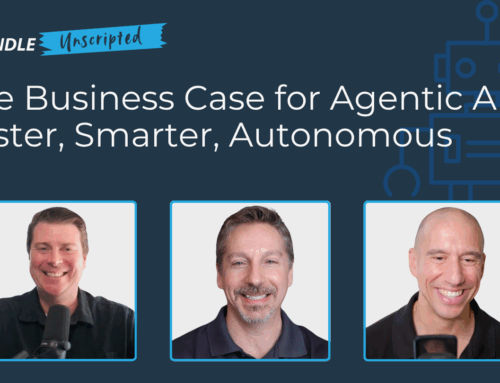In an era when technology is advancing by the second and markets are more volatile than ever, private equity firms are increasingly turning to mergers and acquisitions (M&A) as a strategy to adapt, bring in technical expertise, and expand into new markets.
But many mergers go awry, with 10% canceled completely along the way, and botched deals lead to devastating impacts that reach far beyond the spreadsheet. Some common stumbling blocks include a lack of focus on post-merger integration and value creation, along with insufficient data collection during due diligence. Errors like these led to some of the biggest merger failures in history. One famous example is Microsoft’s 2014 Nokia acquisition where decision-makers ignored important Windows phone market share data, resulting in a $7.6 billion write-off and 25,000 jobs cut.
Organizations can avoid these pitfalls by integrating an agile framework into the fabric of every stage of an M&A. From due diligence and data modeling to cross-functional team facilitation and post-merger integration, agile is the ideal solution for a smooth, successful merger and acquisition process.
What Gets Measured Gets Managed: Key Metrics for Better Due Diligence
Skimping on data collection and analysis mechanisms is one of the key shortfalls when it comes to effective M&A due diligence. It’s also one of the most costly, leading to the failure of massive deals including Sprint and Nextel Communications’ 2005 $35 billion merger. Decision makers overlooked cultural and tech mismatches, resulting in major market share loss.
Before a deal is closed, an agile data collection framework that involves cross-team stakeholders and subject matter experts sharing metrics and analysis is recommended. An iterative operational due diligence process that encompasses rapid feedback loops and phased data requests is also recommended to test the investment thesis, reducing risk and maximizing M&A return.
Utilize flexible data modeling to develop and test data models for different investment scenarios, explore diagnostic analytics to understand what’s happened within corporations in the past, and use prescriptive analytics to make recommendations for the future.
At this stage, it’s imperative to collect accurate and real-time financial and market metrics to assess organizational structure and forecast cultural mismatches. These include cash flow and market share, regulatory compliance metrics, and operations and human resources metrics.
Crossing all the Ts: Agile Data Collection for Regulatory Compliance
According to McKinsey and Company, 14% of large M&A deals announced between 2013 and 2020 were canceled due to antitrust or regulatory issues.
Compliance assessments are an important and increasingly regulated component in PE M&A due diligence. This is evidenced by the Federal Trade Commission and Justice Department’s October 24 update to its merger notification requirements, which calls for increased disclosures about ownership structures and minority stakes.
Agile data collection methods that apply an iterative and continuous data collection process with close involvement from legal professionals are crucial during preliminary due diligence. This allows decision-makers to use real-time agile data collection to review a company’s compliance history and scan the regulatory landscape to uncover risks.
PE firms can also leverage the power of agile data-driven decision-making models to analyze investment scenarios based on different potential regulatory outcomes. These are powerful tools for tracking regulatory approval processes and milestones in real time, making it easier to pivot if any issues arise. Post-deal, PE firms can apply agile data collection principles to monitor ongoing compliance and ensure alignment with regulations during integration.
Blending Families: An Agile Framework in Post-Merger Integration
After the deal is done, agile frameworks help make the post-merger integration phase as smooth as possible. Through Scrum practices like regular daily Scrums, agile nurtures an environment of transparency and communication across teams and organizations. This supports workflow integration and boosts talent retention.
Agile’s iterative feedback loops are a proven method for refining processes during the integration phase. For example, in acquiring Whole Foods, Amazon used cross-functional collaboration to lay out a vision for the merger with integration steps relating to logistics and technology. When customers gave feedback on the company’s new services, agile processes and an agile mindset enabled the organization to respond quickly and effectively from its new united front.
An agile framework can also support ongoing new technology integration, such as AI and digital twins to facilitate decision-making at M&A due diligence, negotiation, and post-acquisition integration stages. Continuously monitoring key metrics throughout the deal lifecycle — another agile data collection technique — ensures deal-makers stay on top of evolving issues.
Our Team of Agile Coaches is Here to Help
Whether it’s applying continuous and iterative data collection at due diligence, or nurturing cross-organization collaboration post-merger, an agile framework is key for maximizing PE M&A success. Ascendle’s team of agile coaches and trainers are available to support PE firms at every stage of the deal cycle. Contact us to learn how we can work together.






